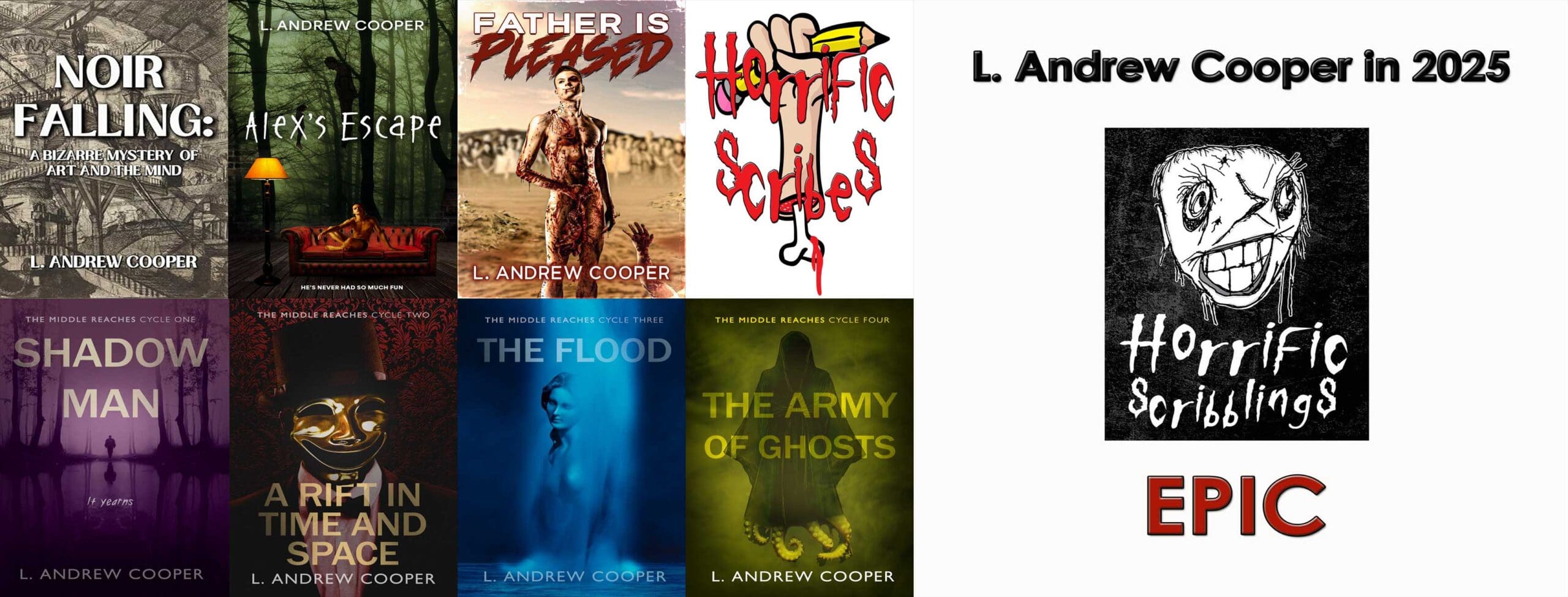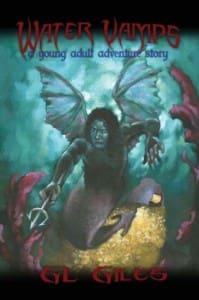G.L. Giles, WATER VAMPS, and the Elements of Vampire Style (2013)
I picked up Water Vamps by G.L Giles on a recommendation. The line under the title, “a young adult adventure story,” would generally be enough to turn me the other way–just not my scene–but having been promised that these vamps, although very different from the traditional in many ways, stick to one rule that should never be broken–they do not sparkle–I decided to give it a try.
The book’s slim length and easily accessible style made it ideal for an evening plane ride home from a conference. The risk was minimal, and the reward turned out to be far greater than I would have thought possible. Water Vamps delivers a young adult adventure story, kids coming of age and learning life lessons and discovering love as they face dangers and learn the value of teamwork, all the good stuff the line below the title promises, but it also delivers quite a bit more for us grownup horror fans.
Giles builds the supernatural side of her Charleston, South Carolina on a rejection of an absolute Christian world view that would easily classify goods and evils, Van Helsings and Draculas, etc. This rejection is manifest through the protagonist family’s pagan values, which narrative outcomes affirm, but it also provides one justification for a proliferation of creatures and perspectives within the novel (or novella’s) 84 pages. We have the titular water vamps, of course, but they have different sects and philosophies, as do land vamps, who have different powers that go with different philosophies.
Furthermore, the water vamps’ (and presumably) others’ powers develop according to some judgment of their accomplishments that comes from some unspecified higher power, a higher power capable of accepting all creatures within Giles’s diversely populated world, whatever kind of vamp, human, siren, raven, or other being the creature might be, as long as it follows an ethic of self-authenticity and respect for others.
The moral is a little heavy at times, which is again appropriate for readers of a less sophisticated age group, but more interesting than the weightiness or contemporary relevance of an affirmation of monster diversity as an affirmation of human diversity (which we see in everything from James Whale’s Frankenstein to Clive Barker’s Cabal/Nightbreed to the Shrek movies) is how this morality seems to operate as a creative force within Giles’s work, giving us (or at least me, and I’ve lectured on the history of vampires across the country) a kind of grammar and vocabulary for vampires we’ve never seen before. And given how many goshed darned vamps have flooded this market since Louis and Lestat got castrated and turned into Mormon teens, that’s about the highest praise I can imagine giving a vampire tale.
The one thing I’ll say that’s somewhere between praise and constructive criticism is that the book contains a little too much. In a short span, we not only get a host of new vampire species and subspecies and some intrigue involving danger, romance, and teens, but we get a mysterious plot tying the present-day teens’ success to the fates of their ancestors, and we also get parallels with a an Ivanhoe-type Robin Hood that go largely unexplained. As I commented to the author in person, it’s hardly bad for me to put down a book and say–but, but, but, what about—!!! Where’s the next—!! As long as she writes more. So YA and vamp fans, brace yourself to be dazzled by creative thinking but left feeling eager for more.

